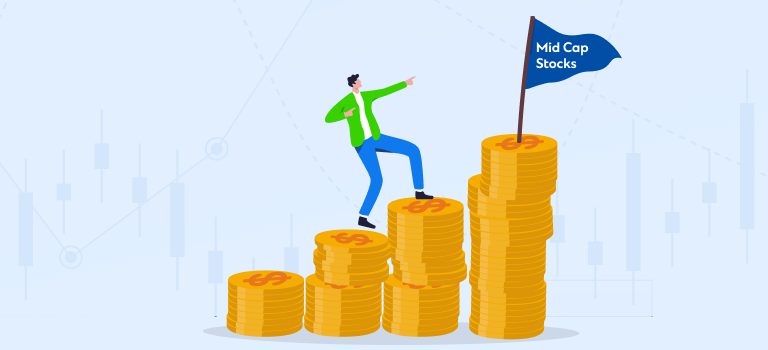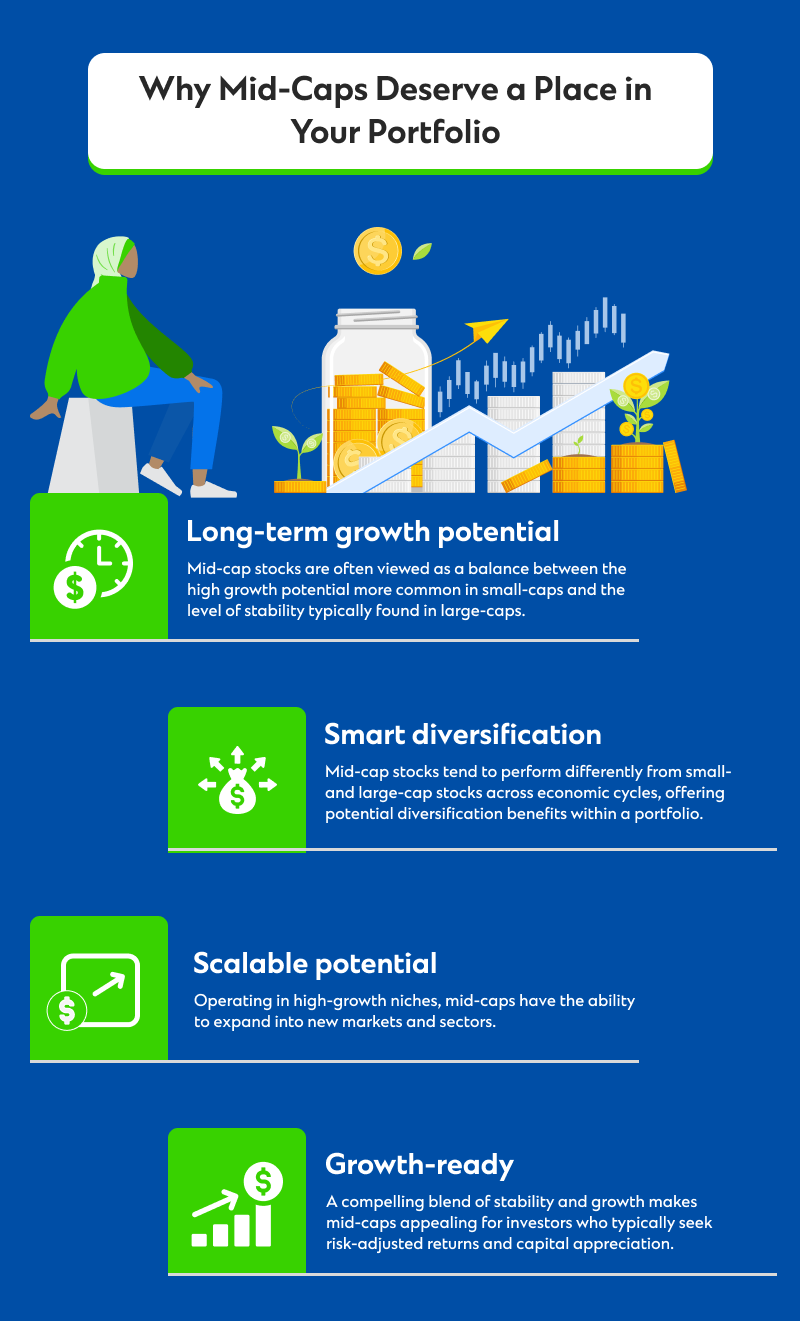

Table of Contents
In a rush? Read this summary:
- Mid-cap stocks sit between small-and-large-cap stocks in terms of size, offering a balance of growth potential and relative stability.
- These companies often operate in defined market niches with room to scale through new products, services, or geographic expansion.
- Mid-cap stocks fits into a long-term strategy for wealth building as they tend to exhibit more short-term price fluctuations than large-cap funds.
Seasoned investors often turn to the stock market for its potential to generate higher returns over time, cultivate financial discipline through systematic investing, and diversify their portfolios over the long term. To effectively navigate the stock market landscape, you first need to comprehend the concept of market capitalisation, the fundamental idea that helps categorise stocks into large-cap, mid-cap, and small-cap. It's a way to measure a company's size and, in many cases, its importance in the market.
Market capitalisation (market cap) is calculated by multiplying a company's total number of outstanding shares by its current share price; it's not a fixed number. That is because stock prices often fluctuate, and the quantity of shares can change due to corporate stock buybacks or issuances of new shares. Just like other key financial metrics, such as revenues, earnings, expenses, and cash reserves, a company's market cap fluctuates over time.
A market cap breakdown: Where mid-caps stand
Although the definition of each cap may vary, analysts and investors put them into groups for more efficient discussion. Here's how market capitalisations are typically classified.
- Large-caps are companies with a market capitalisation of at least USD 10 billion.
- Mid-cap companies have market capitalisations between USD 2 billion and 10 billion.
- Small caps typically refer to a company with a market capitalisation ranging between USD 300 million and 2 billion.
Mid-cap stocks are usually less volatile than small-cap stocks. Investors seeking a balanced approach may find mid-cap stocks an ideal choice as they are less volatile than small caps yet offer more growth potential than large caps.
Why mid-caps deserve your attention
Mid-caps are less volatile than small-caps. Although they offer greater stability, mid-cap stocks may not exhibit the same predictable performance as large caps. At the same time, many have already established themselves in the market. Therefore, there is a lesser chance of sudden setbacks without warning.
Mid-caps often operate in defined niches with established customer bases and growing operational resources. Therefore, investors can expect a potential for growth with less accompanying risk than small caps.
Mid-caps also have room for diversification as they grow. Expansion can come from entirely new product lines, services and geographic territories. However, careful planning is essential during expansion.
Unlike small-caps, they can make more investments to sustain their growth. At the same time, they often offer greater growth potential than large-cap companies, which, due to their massive size, tend to grow at a steadier and more stable pace.

Is a mid-cap fund the right fit for your portfolio?
Deciding on the most suitable type of fund for you can be tricky. To determine whether a mid-cap fund is the right choice for you, consider several key factors, including the size of your portfolio, investment goals, time horizon, and risk tolerance.
- Consider your risk tolerance and the overall size of your investment portfolio: Depending on the size of your portfolio, mid-cap funds may yield larger returns but also carry a greater risk. Remember, they are typically more volatile than large-cap funds. Therefore, a portfolio that can absorb potential losses and tolerate risks can reap the maximum benefits of a mid-cap fund.
- Consider your time horizon: Mid-cap funds tend to exhibit more short-term price fluctuations than large-cap funds. Therefore, you need to have a long-term strategy for wealth building.
Smart diversification for UAE investors through
mid-caps
For high-net-worth individuals in the UAE, where investment portfolios often lean heavily towards real estate or global large-caps, mid-caps offer a smart way to diversify and potentially outperform. With careful selection or through professionally managed mid-cap funds, you can tap into a strategic blend of innovation, scalability, and growth.
Speak to your Standard Chartered relationship manager or contact us to learn more about investing in mid-cap stocks in the UAE.



